The recent Dakar (Senegal) international summit on education concluded on February 3 with the hope to raise $3.1 billion “over the next three years for programmes to support basic education in 65 developing countries”. World leaders and experts attended and discussed how to make quality education accessible to all children.
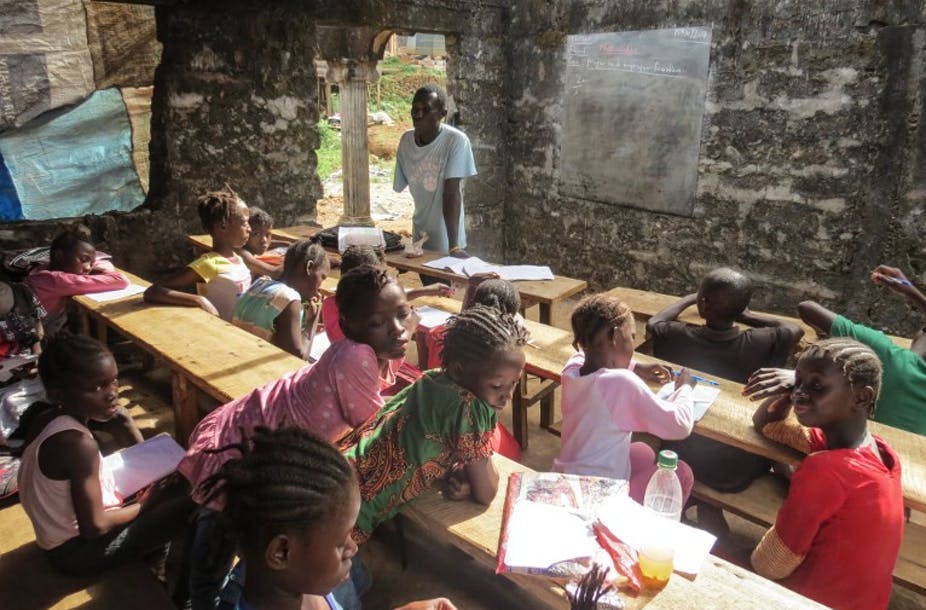
As found by a 2016 Unesco study, approximately 263 million children and youth worldwide are not in school. This includes 61 million children of primary, 60 million of lower secondary and 142 million of those of upper secondary school age.
Of all the regions, sub-Saharan Africa has the highest rates of exclusion: 20% of children between the ages of 6 and 11 are out of school, followed by 33% of youth from 12 to 14. Almost 60% of youth from 15 to 17 are not in school. In sub-Saharan Africa, only 65 of the poorest children for every 100 of the richest go to school.
In Northern Africa, Western Asia and Southern Asia, this rises to 90 of the poorest for every 100 of the richest. Globally, 35% of all out-of-school children of primary age (22 million), 25% of all out-of-school adolescents of lower secondary age (15 million), and 18% of all out-of-school youth of upper secondary age live in conflict-affected areas (26 million).
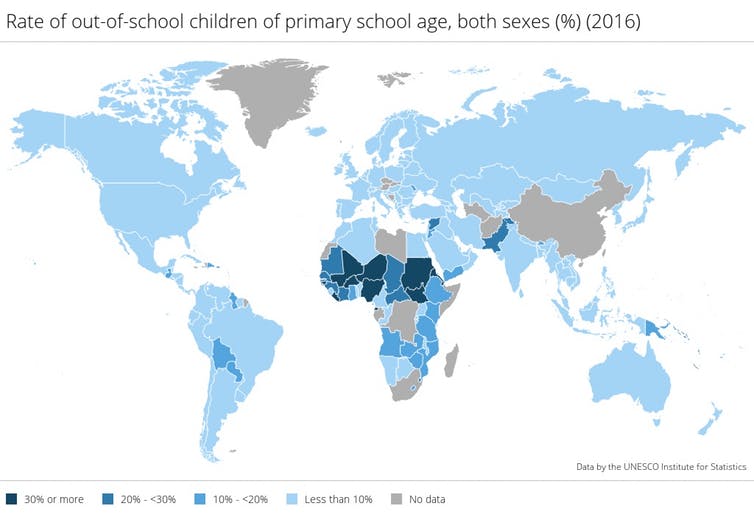
So what are the issues that still need to be addressed? Why are so many children still out of school? And what have been the progress so far?
From our partners:
Attaining gender parity everywhere
Progress has been made toward gender parity in terms of primary-school enrolment, with approximately 70% of countries reaching this quantitative goal, but local cultural perspectives on the value of education to girls in some contexts have also led to exclusion.
For example in Tanzania, thousands of teenagers are expelled from school when they are found to be pregnant and recently, a new law stated that can’t re-enter even after giving birth.
Yet providing girls with an education helps break the cycle of poverty: educated women are less likely to marry early; less likely to die in childbirth; more likely to have healthy babies; and more likely to send their children to school.
The 144 countries covered in the Global Gender Gap Report (2017) have closed more than 95% of the gap in educational attainment. The report’s country profiles provide information on additional gaps between out-of-school children of primary and secondary school age, education attainment rates, advanced and vocational degrees, and gender gaps across various fields of study.
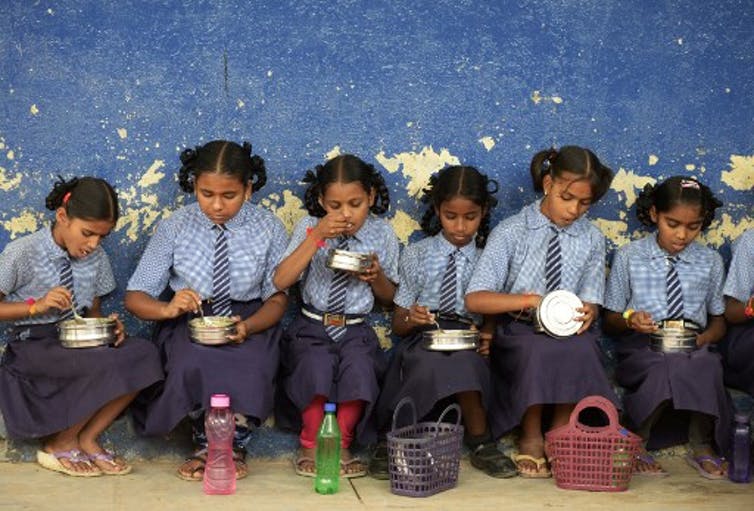
The Unesco Institute of Statistics estimates that 15 million girls of primary-school age will never get the chance to learn to read or write in primary school compared to about 10 million boys. Over half of these girls – 9 million – live in sub-Saharan Africa. In Northern Africa and Western Asia, among the poorest in the region, gaps are far wider: only 85 girls for every 100 boys of lower secondary school age attend school. Among those of upper secondary school age, only 77 of the poorest girls for every 100 of the poorest boys attend.
Even in egalitarian societies, gender differences exist in students’ performance and motivation, in vocational aspirations, in salaries and in participation in different fields. A recent campaign launched by a feminist lobby in Sweden claimed that after 4 pm, women’s work was actually unpaid. It emulated thousands of women over Europe to fight for equal pay.
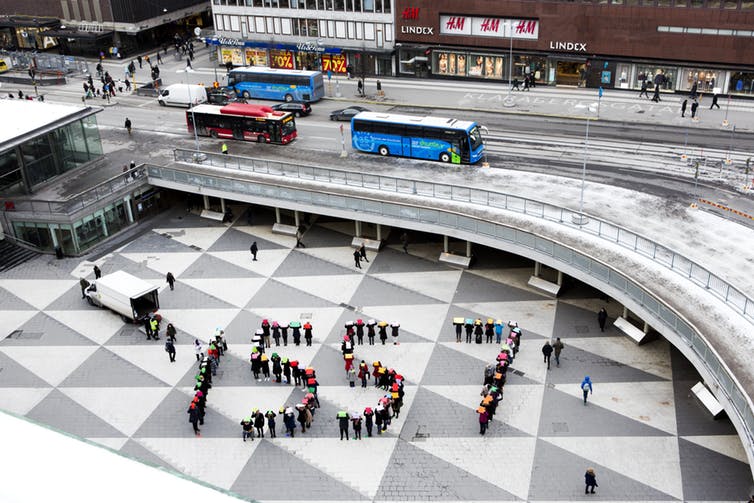
Inequalities also lie in gendered perception of work. Men are expected to develop traits related to agency (as aggressive, forceful, independent, and decisive), whereas women are expected to develop traits related to communal virtues (as kind, helpful, beautiful, and concerned with others); and these expectations lead to self-fulfilling prophecies that perpetuate biases and lead to differences in vocational aptitudes, positions and incomes.
The stratification of education systems
At the same time, education systems are stratified in terms of the prestige and opportunities provided by different types of schools and universities, and access and achievement are strongly correlated with the social conditions of students and their families, leading some authors to argue that the main effect of education is to maintain and even reinforce existing social inequalities and the monopolies of social status through the administration of credentials. The role of education in reducing inequality depends on schools’ ability to compensate for the effects of the student’s pre-existing social and individual disadvantages, providing them with equal opportunities for learning, social participation and work.
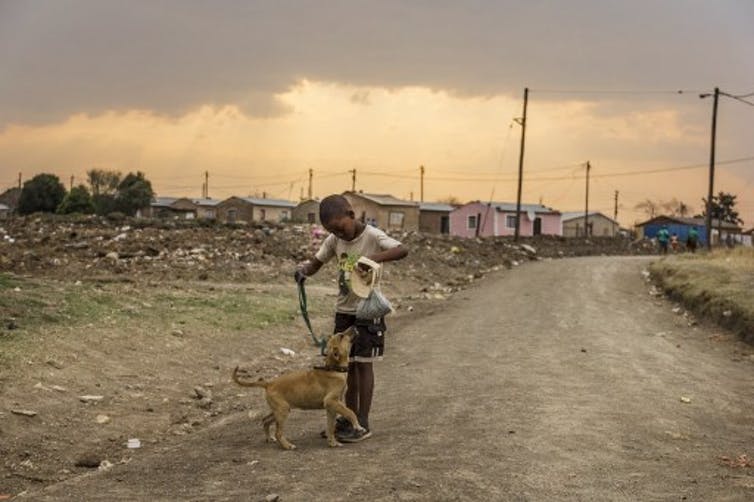
The Coleman Report, published in 1968 in the United States, influenced research and policies for decades by showing that public schools had little or no effect in reducing the inequalities associated with race.
Since then, the assessment of the “school effects” on student achievement became a major subject of education research. There are many strategies to make education more attractive, meaningful and accessible, building upon the children’s familiar language and culture, stimulating participation in collective tasks, and paying attention to the students’ individual difficulties and needs.
Yet, the fact remains that millions of students go through school without learning to read and understand a simple text, to solve a simple arithmetical problem, or to have a grasp of very simple scientific facts. Not only access to and years of education matters, but also the quality of education.
Lack of equity in schooling choices
Inequality of outcomes is also impacted by lack of equity in access to distinct forms/types of schooling: public fee-paying, public no fee-paying, self-funded private or grant-funded private schools. Other factors follow such as class size, student-teacher ratios, teaching and learning time, ability to learn at home, language choice, technology, infrastructure. Finally, inequity in quality (teaching standards, pedagogical methodology, materials, curriculum and curriculum coverage) need to be addressed. More schooling is therefore not necessarily equal to a better education.
Inequality in education achievement starts in the early years, and can be cumulative. That is why good-quality preschool education is crucial to reduce differences in language and literacy development. In primary education, inequality can increase if students arriving with different conditions are not supported with differentiated action to ensure that they acquire the required competencies in reading, writing and arithmetic in the first one or two years.
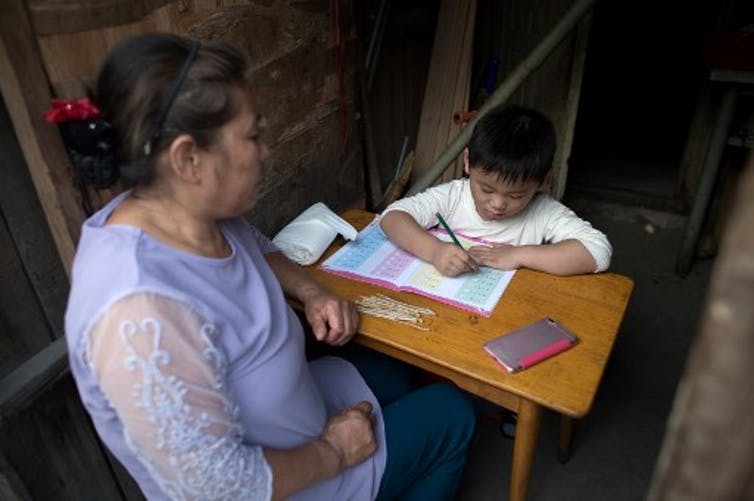
In highly unequal societies with decentralized school systems, poor students may end up enrolled in local schools with fewer resources and lower teacher quality, which can increase the gap between them and those coming from richer and better educated families that go to better equipped and pedagogically stronger schools.
Teachers are not mere carriers of knowledge
There is high consensus among researchers about the crucial role of teachers. Teachers are not just carriers of knowledge and information, they also have a significant impact on children’s quality of life – including their relationships with peers and adults, and their dispositions towards learning and life more generally. Consequently, the quality of teacher education is an issue of high relevance.
At the secondary school, a central issue is the existence of separate academic and vocational study streams. To deal with the differences in students’ interests, motivations and competences, several countries have developed highly differentiated systems, with general and vocation education tracks going up to the tertiary level.
One common criticism on this differentiation is that tracking often takes place too early in the students’ life, and is related more with the students’ social origins than with their intellectual potential. However, the separation between academic and vocational tracks might have beneficial effects, since it allows for the inclusion of a large variety of students in schools, increases the supply of vocational skills in the economy, and facilitates the transition from school to work such as in Brazil, for example.

Everyone should be able to protect his income
Higher education can lead to inequality by providing additional benefits to those that are successful in completing secondary education and going through the selective processes of university admissions.
In general, the wage differential between those with higher education and those without it is affected by the relative scarcity of persons with high education in a country and the demands for highly skilled persons in the economy, but also by the ability of persons with less education to protect their income through strong union organization and minimum wage legislation.
A crucial challenge for the 21st century is to increase the quality and scope of education research, and to consider the large variability of educational policies and governance.
The State of Ceará, Brazil, is a good example of how the combination of high standards, cooperation between school leadership and local governments and community involvement can lead to high quality education among a very poor population and with limited resources
Such policies – flexible, participatory and accountable – that take the political and social contexts into account can lead to important and positive educational reforms that balance the goals of education: civic culture, humanistic values, economic productivity and social equity.
This article originally appeared in The Conversation.
















